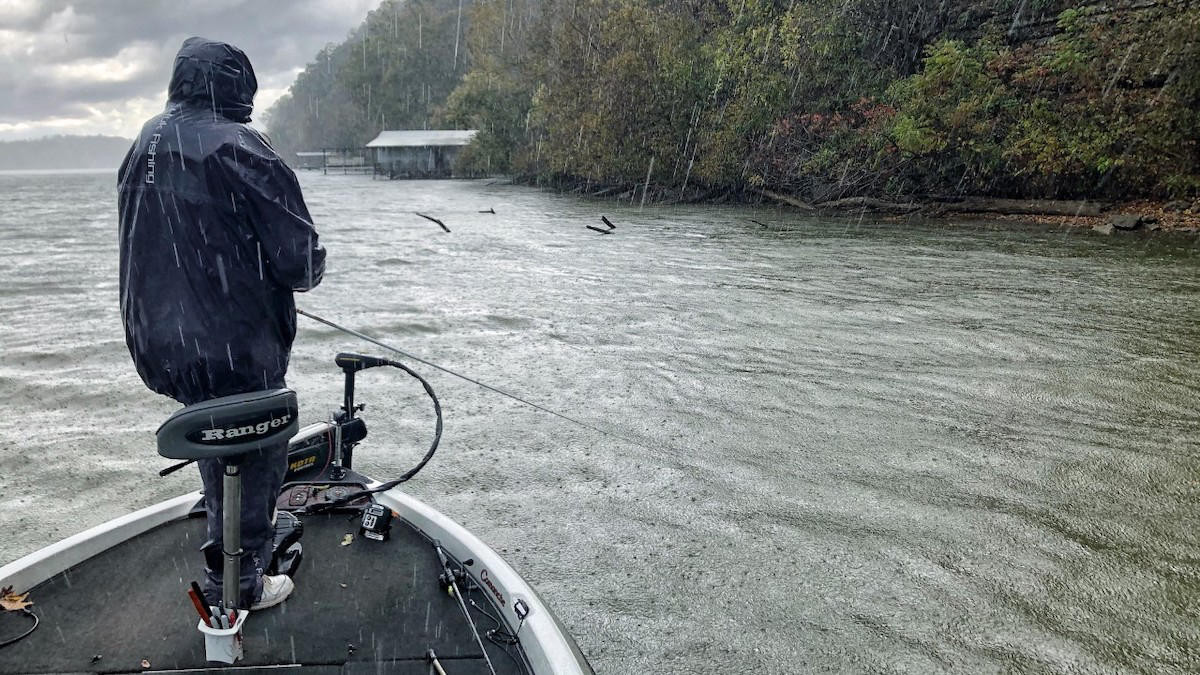Trout fishing is an activity that requires knowledge of the fish’s habits and preferences, along with an understanding of environmental factors that affect their behavior. Successfully fishing for trout depends on the right combination of water temperature, oxygen levels, and the time of day or year. Here’s a detailed guide to help you determine the ideal conditions for trout fishing.
Understanding Trout Behavior
Temperature Preferences
Trout thrive in specific temperature ranges, generally preferring cooler water. The ideal water temperature for trout is between 34 and 67 degrees Fahrenheit. Within this range, they are most active and feed aggressively. When temperatures rise above 70 degrees Fahrenheit, trout become stressed, less active, and seek out deeper, cooler waters to avoid warm temperatures

Oxygen Levels
Trout require high oxygen levels to survive and thrive. Water temperatures directly affect oxygen levels, as warmer water holds less dissolved oxygen. During summer, especially in slow-moving waters, oxygen levels can drop, which can make trout sluggish and less likely to bite. Oxygenated areas, such as riffles and areas with rapid currents, are ideal fishing spots
Best Times for Trout Fishing
Early Morning and Late Evening
Trout are most active during the cooler parts of the day, which are typically early morning and late evening. These times offer optimal fishing conditions as trout come to the surface to feed on insects and other food sources. The reduced light levels during these periods also make trout less wary of predators
Post-Rain Conditions
Fishing after a rainstorm can be particularly effective for trout fishing. Rain increases the oxygen level in the water and often washes insects and other food into streams and rivers, making trout more active and aggressive in their feeding. This condition can lead to successful fishing as trout are more likely to bite

Seasonal Considerations
Spring
Spring is one of the best times for trout fishing. As the water begins to warm after winter, trout become more active. During spring, focus on areas near tributaries where insects and larvae are abundant, offering plenty of food for hungry trout
Summer
In the summer months, trout often retreat to deeper, cooler waters to escape the heat. Fishing early in the morning or late in the evening is ideal. Target deeper parts of lakes or shaded areas in streams where water temperatures are cooler and oxygen levels are higher
Fall
Fall provides another prime opportunity for trout fishing as trout prepare for the winter by feeding heavily. As temperatures begin to drop, trout move to shallower waters, making them easier to catch. Look for them near the surface during overcast days
Winter
In winter, trout are generally less active due to colder water temperatures but can still be caught. Focus on deeper pools and slower-moving waters where the temperature remains stable. Using slower retrieval methods can be effective in these conditions.
Water Clarity and Conditions
Clear vs. Murky Water
Trout have excellent eyesight and prefer clear water where they can easily spot prey. In clear water, using light line and natural-looking baits is crucial to avoid spooking the fish. Conversely, in murky water, trout rely more on their sense of smell and the vibrations of prey, so using scented lures or those that create vibrations can be beneficial
Flowing Water
Trout prefer flowing water because it provides a consistent supply of oxygen and food. Streams and rivers with a good flow are ideal locations. Look for areas where water flows around rocks, logs, or other structures where trout can hide and ambush their prey .
Habitat Preferences
Stream and River Fishing
In streams and rivers, focus on areas with cover such as rocks, logs, and overhanging banks. These structures offer protection and ambush points for trout, making them ideal fishing spots. Additionally, the areas where fast and slow-moving waters meet, known as “seams,” are excellent places to find feeding trout
Lake Fishing
In lakes, trout are often found near structures such as drop-offs, weed beds, and submerged trees. These areas provide cover and attract baitfish, making them prime spots for trout. During the warmer months, trout may move to deeper, cooler parts of the lake, so adjusting your fishing depth is crucial.

Weather Influences
Cloudy Days
Cloudy days can offer excellent trout fishing conditions. Reduced light levels make trout less wary, and they are more likely to venture out from cover to feed. Using brightly colored lures can help attract their attention on such days .
Windy Conditions
Wind can have both positive and negative effects on trout fishing. While it can make casting more challenging, wind can also stir up the water surface, bringing food to the surface and making trout more active. Positioning yourself so that the wind is at your back can help with casting
Understanding the ideal conditions for trout fishing can significantly enhance your chances of success. By focusing on the right water temperatures, oxygen levels, and knowing the best times and seasons to fish, you can increase your chances of having a productive and enjoyable trout fishing experience. Whether fishing in streams, rivers, or lakes, paying attention to these conditions will help you locate and catch more trout

Robert Smith is the proud owner of Bait Barrels and Bows, a premier fishing sports store established in 1989. With over three decades of experience in the industry, Robert has honed his skills to become an expert angler, sharing his vast knowledge and passion for fishing with enthusiasts around the world. Through his store and writings, Robert provides invaluable tips and guidance, helping both novice and seasoned anglers improve their techniques and enjoy the sport to its fullest. His commitment to the fishing community is evident in his dedication to quality products and excellent customer service.

